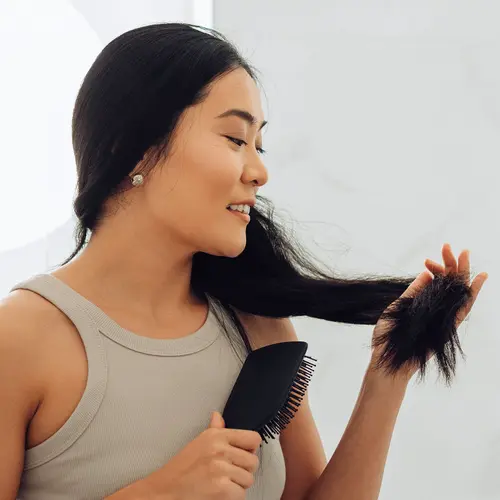Just because you've got oily skin, that doesn’t mean you have to forever forego makeup. It's a matter of knowing what works with your skin type.
These eight ideas, from a makeup artist and a dermatologist, are expert solutions for wearing makeup if you have an oily complexion.
1. Always prime your skin first.
When you have an oily complexion, using a makeup primer helps everything stay put, says Los Angeles-based makeup artist Emily Kate Warren.
You should at least prime oiliest areas (think: the T-Zone -- forehead, nose, and chin) with an oil-free, anti-shine primer. Put it on after you've cleaned your face but before you put on foundation, powder, or other makeup.
2. Prep your peepers.
To cut down on eye makeup creasing, avoid priming your lids with concealer, something that Warren says many women with dark circles or redness do.
Instead, use a primer specifically designed for eyelids. The base creates a perfect canvas for eye shadow and liner while absorbing crease-causing oils throughout the day.
3. Don't overdo powder.
It sounds like the right thing to do to pile on the face powder. But going overboard could backfire by making your pores push out more oil.
Apply powder just on areas that are shiny. Use a matte translucent formula, which can cut shine on any skin tone.
If you do apply too much powder, dampen a makeup sponge and blot it over the over-powdered areas.
4. Carry blotting papers.
No matter how flawless and matte your makeup looks in the morning, if you’re prone to oiliness, you’ll spot shine by midday.
Some blotting sheets simply lift the oil from your skin. Others deposit a bit of powder to sop up the oil.
The trick to using blotting papers without taking off all of your makeup is to press the paper where you’re oily and then roll it off your skin, instead of rubbing the paper on your skin.
5. Go oil-free.
Since your skin naturally produces more than enough oil, invest in makeup products (especially foundation and blush) that are oil-free and noncomedogenic, which means they don't clog your pores.
Also, use face cleansers and toners that are infused with glycolic acids, which cut down on excess oil, says Elizabeth Tanzi, MD, a cosmetic dermatologist in Washington, D.C.
Another good acid to consider using is salicylic acid.
6. Look for "long wear."
Water and oil can do the same things to makeup: make it smear, smudge, or slip. That's a reason to stick to eye products that are waterproof, water-resistant, or long-wear.
One of the best, long-wear combos is water-resistant eyeliner and cream eye shadow over an eye primer.
7. Think soft skin, not slick skin.
Those heavy, anti-aging creams are fine for nighttime use, but before you put on your makeup, reach for a lighter moisturizer that hydrates without being greasy. Consider using a serum. It tends to be lighter.
Don't forget your sunscreen -- look for an oil-free formula. After you’ve put it on, place a tissue flat on your face and press gently to remove any excess before applying your makeup base.
8. Reduce excess oil.
Once or twice a week, use a treatment mask. Those made with kaolin or bentonite clay are best for oily skin types, as they naturally absorb oil and impurities while calming irritation.
Apply a quarter-sized amount for the mask with your fingers. Leave it on for 10-15 minutes, and then rinse it off with warm water for an immediate matte finish.


